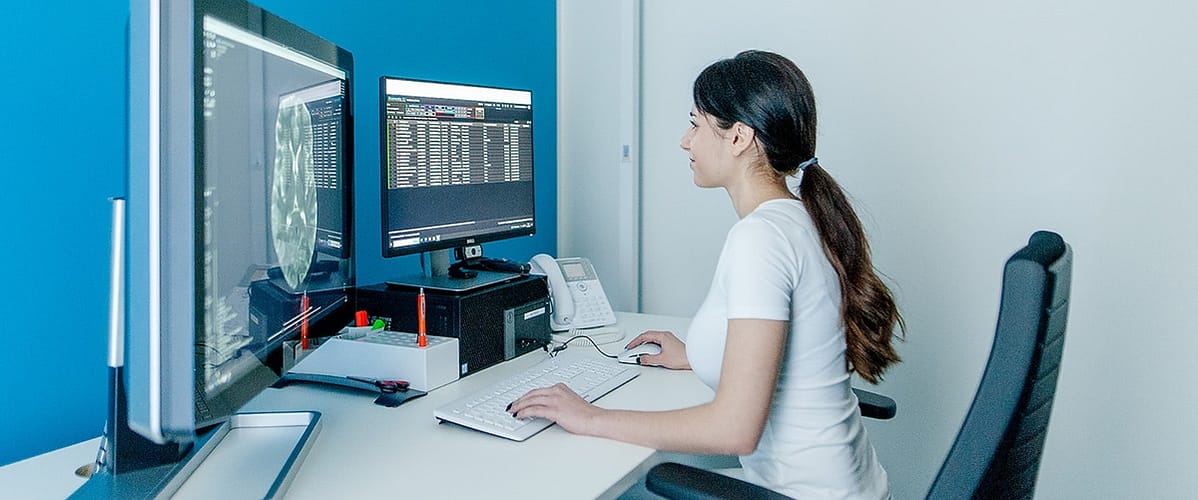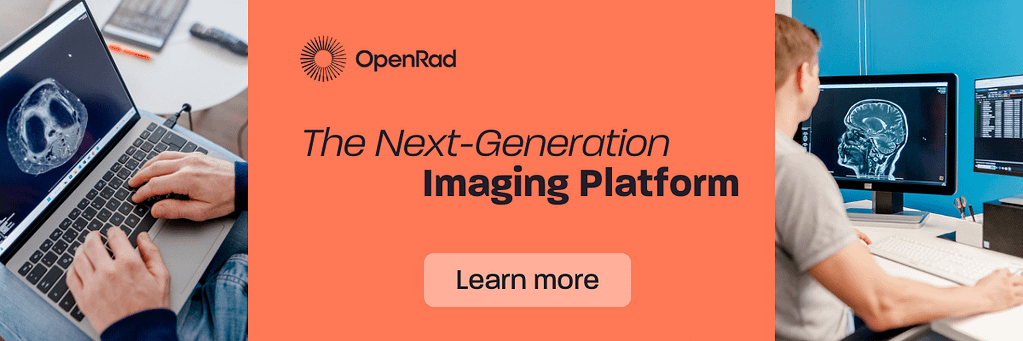Enhancing the efficiency of tasks and processes within a radiology department is the skillful and scientific practice of workflow optimization in radiology. Let’s have a look into how to best do it.
📖 Author: Emmanuel Anyanwu | Alberta Health Services, Canada
Radiology is very essential in the healthcare industry, with radiologists playing a crucial part in patient care, providing indispensable insights into patient conditions through imaging technologies like X-rays, MRIs, and CT scans.
However, the field is not without its challenges—one significant hurdle being the optimization of workflows.
Importance of workflow optimization
Workflow optimization in radiology is the art and science of refining the intricate sequence of tasks and processes within a radiology department to maximise efficiency without compromising the precision and quality of diagnoses.
In this context, workflow optimization becomes the guiding principle driving the evolution and enhancement of radiology practices. It involves strategically aligning technology, processes, and human expertise to orchestrate a symphony of seamless operations.
From the moment an imaging study is scheduled to the final delivery of the diagnostic report, every step holds significance in the patient’s journey towards better health. Thus, understanding and implementing strategies to refine these steps and eliminate inefficiencies become paramount.
Strategies for workflow optimization
- Advanced technological integration:
- AI-powered assistance: Implementing artificial intelligence can significantly expedite processes such as image analysis, aid in preliminary screenings, and reduce radiologists’ workload.
- PACS: Upgrading and integrating PACS with other systems can facilitate smoother data access and transfer, eliminating unnecessary delays in image retrieval.
- Standardised protocols & guidelines:
- Establishing protocols: Develop standardised protocols for image acquisition, interpretation, and reporting to ensure consistency and reduce variability among radiologists.
- Clinical Decision Support Systems (CDSS): Incorporate CDSS to prompt adherence to best practices and guidelines, assisting radiologists in making accurate diagnoses and reducing errors.
- Optimized staffing & training:
- Skill enhancement: Continuous training and skill development programs empower radiologists to adapt to evolving technologies, enhancing their efficiency in handling complex cases.
- Task delegation: Efficiently distribute tasks among radiology staff, ensuring that each professional operates at their maximum capacity without overwhelming workloads.
- Streamlined communication:
- Enhanced interdepartmental collaboration: Improve communication between radiology and other departments to ensure seamless information exchange and coordinated patient care.
- Patient engagement: Implement patient education and interaction systems, streamlining appointment scheduling and reducing no-shows or cancellations.
- Performance metrics & analysis:
- Data-driven insights: Utilise analytics to monitor key performance indicators (KPIs) such as turnaround times, report accuracy, and resource utilisation, enabling informed decision-making for further improvements.
- Continuous improvement culture: Encourage feedback and change for the better within the department, where staff actively contribute ideas for workflow enhancement.
- Adapting to technological innovations:
- Stay updated with emerging technologies: Be proactive in adopting and integrating new technologies and software solutions to optimize workflows and stay ahead in the evolving field of radiology.
- Customisation & tailoring solutions: Tailor technological solutions to specific departmental needs, ensuring seamless integration and maximum efficiency gains.
- Compliance & quality assurance:
- Regular audits & quality checks: Conduct regular audits and quality assessments to ensure compliance with regulatory standards, thereby maintaining high-quality standards and patient safety.
- Continuous training on compliance: Educate staff on compliance requirements to avoid errors and delays due to non-compliance issues.
Benefits & impact
Efficient workflow optimization in radiology brings forth numerous benefits:
- Enhanced patient care: Quicker diagnoses and timely treatments improve patient outcomes.
- Operational efficiency: Reduced wait times and enhanced resource utilisation contribute to cost-effectiveness.
- Radiologist satisfaction: Streamlined workflows alleviate burnout and enhance job satisfaction among radiology staff.
- Adaptation to technological advances: Constant optimization prepares departments to embrace technological advancements readily.
All in all, workflow optimization in radiology is an ongoing endeavor essential for meeting the growing demands of healthcare. Embracing technological innovations, standardising protocols, fostering efficient communication, and analysing performance metrics are critical facets of this pursuit.
By implementing these strategies, radiology departments can achieve streamlined operations, ultimately delivering superior patient care while ensuring the sustainability and growth of their practice.
—
How optimized is your daily workflow? Share your thoughts via the comment section below.
Want to join a great team? Check out our careers section. We are always looking for outstanding talent—from application specialist to software developers.
📷 Photo credits: daniela-mueller.com


